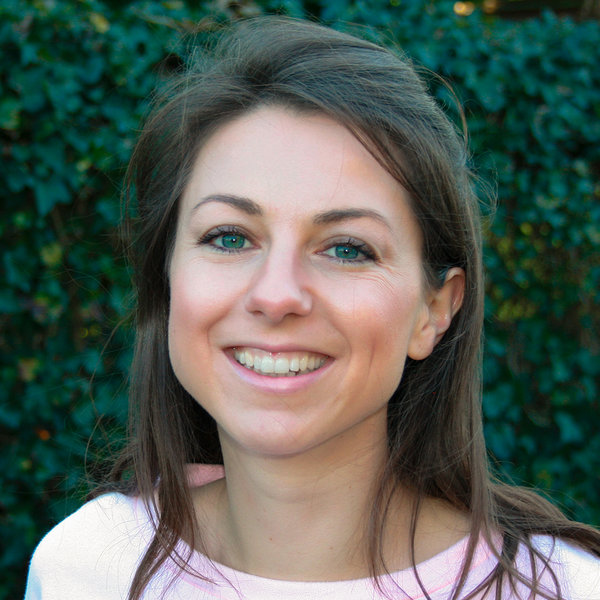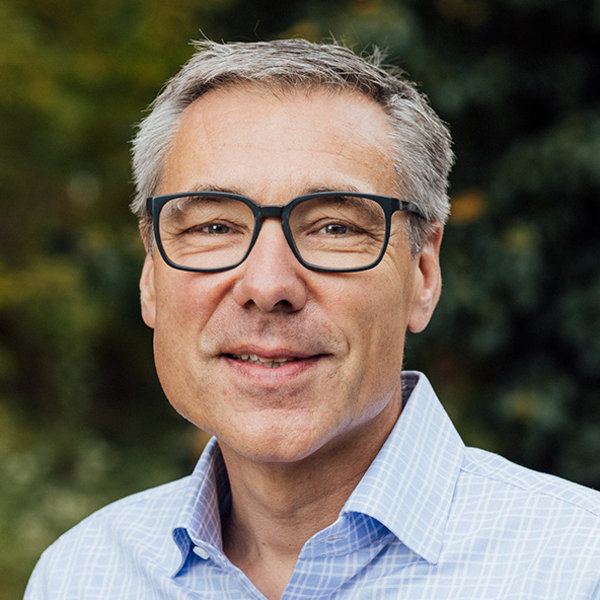
Three weeks ago, I wrote a blog about the odd times we are living through and the almost unbearable diversity in our individual experiences of these times. I was also reflecting on the gravitational powers of what we perceive as ‘normality’ (the one before the crisis) and what this could mean in the organizational realm. My thoughts were around Day 0 and how we would potentially return to our pre-Corona working habits, the moment we are back in the physical spaces and routines we know. And I started to think about how powerful it would be instead to look at the positive seeds of transformation that are currently emerging and to take them as a starting point for actively shaping the future now.
This blog got large resonance and has triggered numerous further discussions, reflections and questions especially on how one could go about shaping the future now, in the midst of the crisis. This is why my colleagues Annelies, Dani and I have decided to take the thinking one step further.
So, three weeks further in our thinking, we believe that the thought of identifying and watering the small grains of positive new ways remains valid and productive. At the same time, there will be no one “Day 0”, but rather several small steps, at different times in different places and for different organizations, in which ‘normality’ will be “reinstalled”, for however much that is possible.
Most probably, in a couple of years or decades, we will see the Corona crisis as part of a much larger transformation – as symptom of it, as its catalyst or turning point, we don’t know yet. There is no clear starting or end point for that transformation. Therefore, Day 0 becomes the day we choose to mark as the start of something new – because the ritual of such a clear starting line helps us to be clear and determined about the new we are trying to achieve.
This thought also underlines our perspective: we want to be actors in this transformation, not spectators. We believe the space is there to shape the future right now.
An enlarged space of possibility
One of the central barriers in shaping an unknown future is that it is so difficult to imagine what can be. This is why experiences of something new are so powerful in triggering changes – and be it only the visit to a company that does things differently than you do in yours, a vacation to a place where people celebrate differently. The experience opens up a new possibility.
The Corona crisis has radically enlarged the space of possibility – good and bad. We see examples where employees’ every keystroke is now monitored by spy-software in their home offices, next to examples of a sudden rise in the possibility to self-organize, with unknown amounts of trust. We see some leaders rise to greatness – and others using the opportunity to further their individual interests on the back of others.
All of this is happening while the real focus is on managing the crisis – stopping the virus, taking care of the ill, limiting the damage to organizations and the economy, supporting individuals and families in need, and so on. The danger and suffering is so overwhelming that it could feel like bad taste or at least bad timing to point out the small glimpses of collateral beauty.
Yet in spite of the largeness of the crisis, we feel that this is also the opportunity to shape the future.
It starts with discovering and recognizing the collateral beauty, the seeds of the future we want to build.
Making it practical
‘So, how would such a process work?’, quite some people asked us over the past weeks. We are bringing together a number of ideas that we have applied to ourselves and to various client projects. One could use these ideas sequentially, as one step following the other, or as stand-alone interventions, as each of them will already build on the positive experiences people are making now, in the midst of all turmoil.
What we write here has been shaped by our conversations with a whole range of people we work with, about the glimpses of collateral beauty they see, and what to do with them. All these people come from different organizations and hold different positions in these organizations. What seems to be a red thread is that in spite of all the differences, everybody feels the impact of the crisis strongly. There is quite some concern about the years to come, with the economic crisis looming. The normal ways of working have been disrupted, for many, some 80% of the office staff now works from home. On top of that, most cannot run their business as they used to, because of closures, regulations, or simply a sudden decrease in demand.
With these impressions in our mind, we have looked for possibilities to start shaping the future. No silver bullet recipes, but concrete steps one could take now. It is easier to change direction while you are already moving, then while freezing in fear. The following ideas are not done, but meant as an invitation to step in and make it fit to the place you are at.
1. Direction
As the first dust of pure crisis management settles, one might be able to take a step back and think, beyond the urgency of the here and now. What was our purpose again? How is that changed by what happened over the past four months? In which direction are we developing our organization? – We are hearing the first reflections on these questions. It could be interesting, right now, to start small conversations within the organization to what extend what you do is still relevant – and where you would like to make changes. Also, to double check on the issues you talked about at the end of 2019, stuff like become more agile, flexible, customer-centric, increasing collaboration across internal and external organizational boundaries, people taking more responsibility, or becoming more sustainable.
Many of these topics will still be there, probably even more pressing and relevant than 5 months ago. New topics might have emerged over the past months. So, which topic is yours? What do you want to bring forward? And can you decide for yourself that you will not waste this crisis?
2. It starts with the ‘who’
We are convinced that any change starts with people who want to make a difference, who are ready to step in. Anyone could take that initiative, to formally or informally bring together some people.
Of course, if this is to be an official mission, it makes sense to establish a group that has credibility in the organization, and that is backed-up well in the normal power structures of the organization. People who can free their minds for this – because they are not (fully) involved in the day-to-day crisis management.
Let’s assume that this becomes something that is officially started and set up, because the organization sees the unique opportunity. We would then invite the design team to go through the following steps to experience them and try them out, and to be able to shape the whole process in such a way that it is consistent with your organization’s overall direction. So, if your whole desire is to increase co-operation across silos, the way the team goes about the next steps should be in the spirit of good collaboration: the method is the message.
Being sharp about what exactly you mean by ‘good co-operation’ is essential, in terms of what you want to see yourself and others doing in the key moments that matter most (see below).
3. Research as an intervention
Especially when the share of the unknown is large, research becomes not only a tool for getting to know more, faster – it is often, in itself – already an effective intervention in a change process, because it creates increased awareness and levels of insight among those who do the research, and, when done smartly, those who are being researched. In fact, in the kind of action research we prefer, people research their own practices, so that the insights are created directly where they need to be applied.
For example, we have heard of a production company that is observing the social distancing rules, where productivity has gone up. There seems to be more focus, several regular meetings were cancelled due to the situation. Here, it would be interesting to find out if there is a connection. And how people are now ensuring that they keep each other informed, solve problems together, stay connected – or whatever purpose those cancelled meetings had. Other clients have reported much easier collaboration across silos, a higher level of practical solidarity, or higher levels of engagement, just to name a few additional examples of seeds you might want to build on further.
Based on the chosen topic, the design team defines a first scope of who to invite to the research. Typically, this would be everyone that has a stake in the desired change.
The design team then looks at the best ways how to invite people into conducting this research – creating an atmosphere in which it feels safe and attractive to have a closer look at your own daily work practice.
Key Moments
We suggest working with the idea of key moments (also called critical incidents, crucial situations, moments of truth): for any change to happen, someone, somewhere will need to do something differently. Improved collaboration across silos is happening when people from these different departments meet and deal with an issue that touches differing interests. It is in that concrete moment, that meeting, that the collaboration is happening, or not. For any aim you are working towards, there will probably be between three and six of these archetypical work situations that make the bulk of the difference.
Working with key moments is a powerful tool to retain the complexity of the issue at hand – because all aspects that typically are relevant for how the co-operation happens are present in those moments. At the same time, thinking in these moments allows to focus on what people actually do – which is, at the end of the day, what matters. One can look at, in any given situation, the influencing factors for that particular behavior – and see if one can change those factors.
In terms of content, the research would need to cover the following points:
- What are the key moments for the change we would like to see? When is it happening in our daily practice?
- What is it that we see ourselves do, concretely, that would really mean that we are fulfilling our ambition?
- Where can we see small seeds of this thinking and acting, that we would like to see more of, in our current, new practices?
- What has made this new thinking and acting possible?
- What is needed so that we can keep it up, even beyond the current crisis?
The results of this research could be any kind of “products” that work in your organization – stories that you tell or publish, posters, blogs, films, podcasts. The idea is that the communication about the result of the research helps colleagues to see that in their daily action now, they might be doing things that would be worthwhile to have more of. This is about making explicit what works now, and shining the light on it so that those seeds of the new can grow.
4. Design the key moments of the future
For a lot of people, their current work reality is very different from what it used to be. This radical change offers an opportunity – because the current work practices are still new, it is easier to change them. “How we do things” has just become much more fluid.
Based on the research people have done into their own ways of working, you could invite colleagues that share a key moment to redesign the way they act in that moment, based on what they like about their current ways of doing. How would that new way of collaborating look in a meeting, even if that meeting is taking place in the old context, with the incentives as they used to be? Which surrounding conditions would we want to change to make this possible?
From one of our clients, we have heard the story of a Management Team that had built a long-standing tradition of competition among departments, with lengthy discussions and endless decision-making processes as a consequence, as soon as different interests were involved. Through the crisis, the over-competitive behavior somehow diminished, people listened better to each other and were ready to help each other out, in the interest of the whole. Discussions were much more to the point, decision-making fast, atmosphere great. The question of the CEO was: ‘How can we keep this up, even after the crisis?’ – The CEO then did something simple, asking his team what they observed, and therefore making explicit how exactly the way they worked together had changed (research). Then, the team discussed what they liked about their current way of shaping their regular meetings, and what not. And decided on a number of principles, do’s and don’ts, going ahead.
5. Experiment
One could see what is happening around us as an endless array of experiments. There have probably not been many moments in history where people were forced to find new ways of doing without knowing what would work beforehand for sure on such a scale. Arne reflected in a blog about this during the first weeks of the crisis.
Most of the discoveries of the past weeks were unintended experiments – we just had to find new ways, in the midst of the turmoil. This trying out now could lead to more conscious, maybe more daring experiments: if we see that productivity increased without a fixed meeting schedule, how about experimenting with even more radical ways of collaborating?
The essence of a designed experiment is that you ensure a space of limited consequences. Failure is a possibility – so one needs to make sure that the consequences of that failure are easily bearable, both factually (e.g., not a lot of money will be lost), and socially (e.g., no one is blamed, rather one embraces the failure as something curious to look at and learn from).
We have seen that organizations that are good at experimenting are often highly innovative, flexible, and attractive places to work at for professionals.
Start Now
We believe that this is the time to act and shape the future – while we are still in the mode of finding new things out, while the current answers are not carved in stone yet. We believe there is a lot of power in starting the conversations right now – in contrast to waiting until people move back to their desks with the risk of falling back into old and well-known practices and habits. You can do that from any position in an organization, as an informal or formal process.
Our endless curiosity in how we will manage to transform ourselves and our organizations in and through this crisis has led us to write this piece – and keeps us keen to hear from you. How are you busy shaping the future now?
Online Meeting
We are hosting online meetings (in different languages) to further explore this line of thinking:
- English (Annelies, Dani, Arne): 19 May, 17-18:30 CEST
- Dutch (Annelies & Arne) 20 May, 13-14:30
- German (Dani & Arne): 20 May, 16:30 -18h
If you are interested to join, please let us know.
In any case: we would love to hear from you. Let’s talk.

